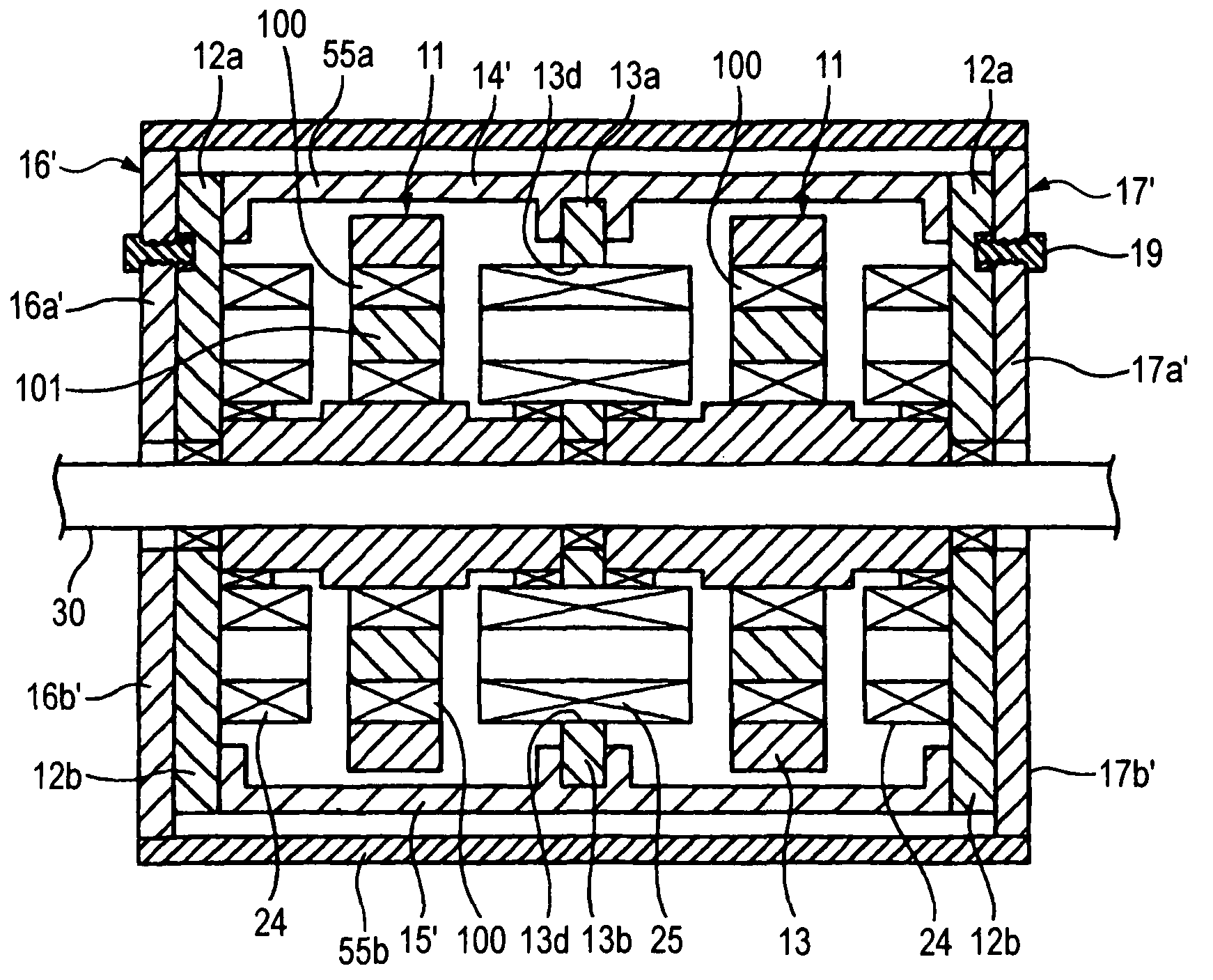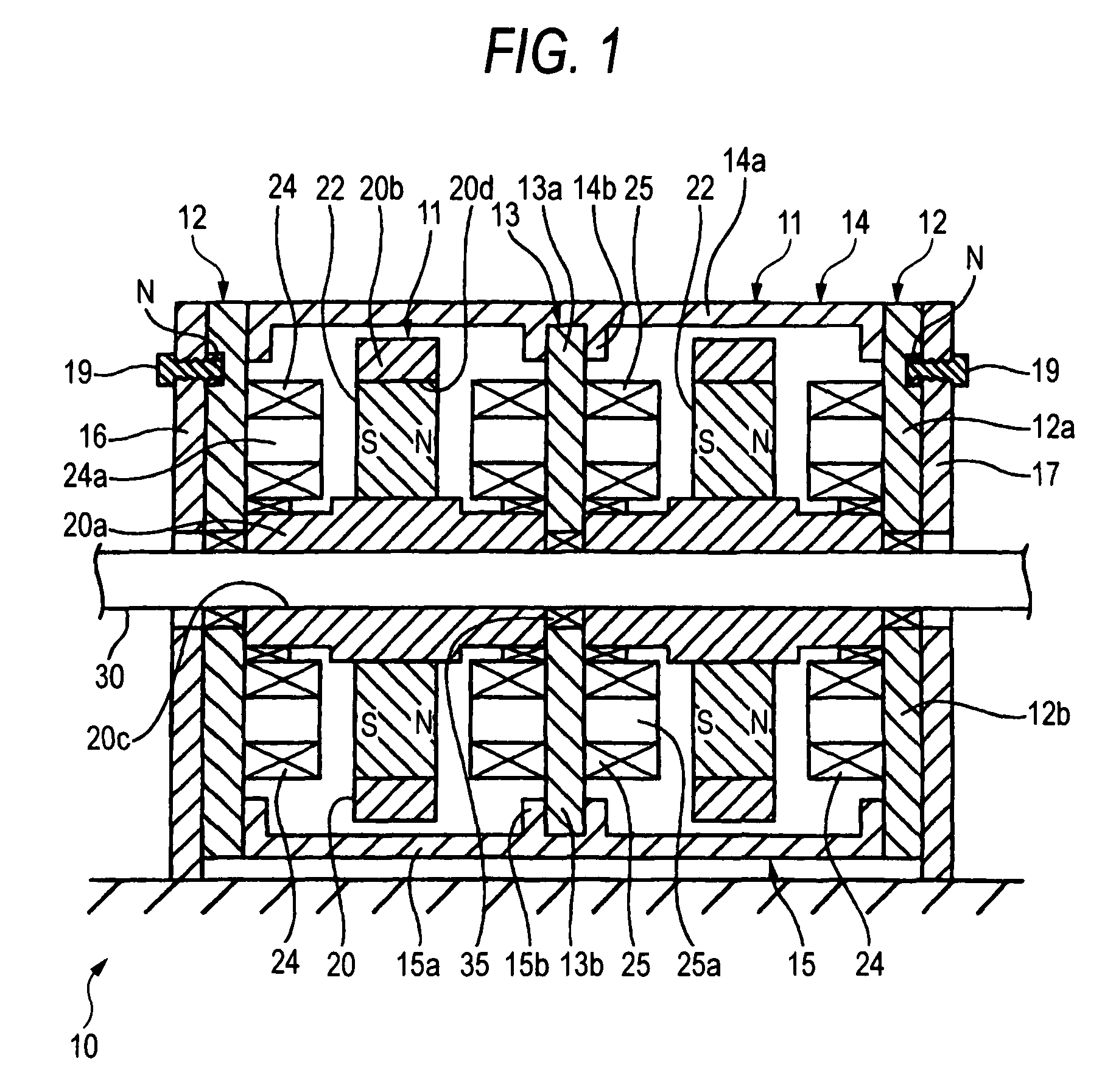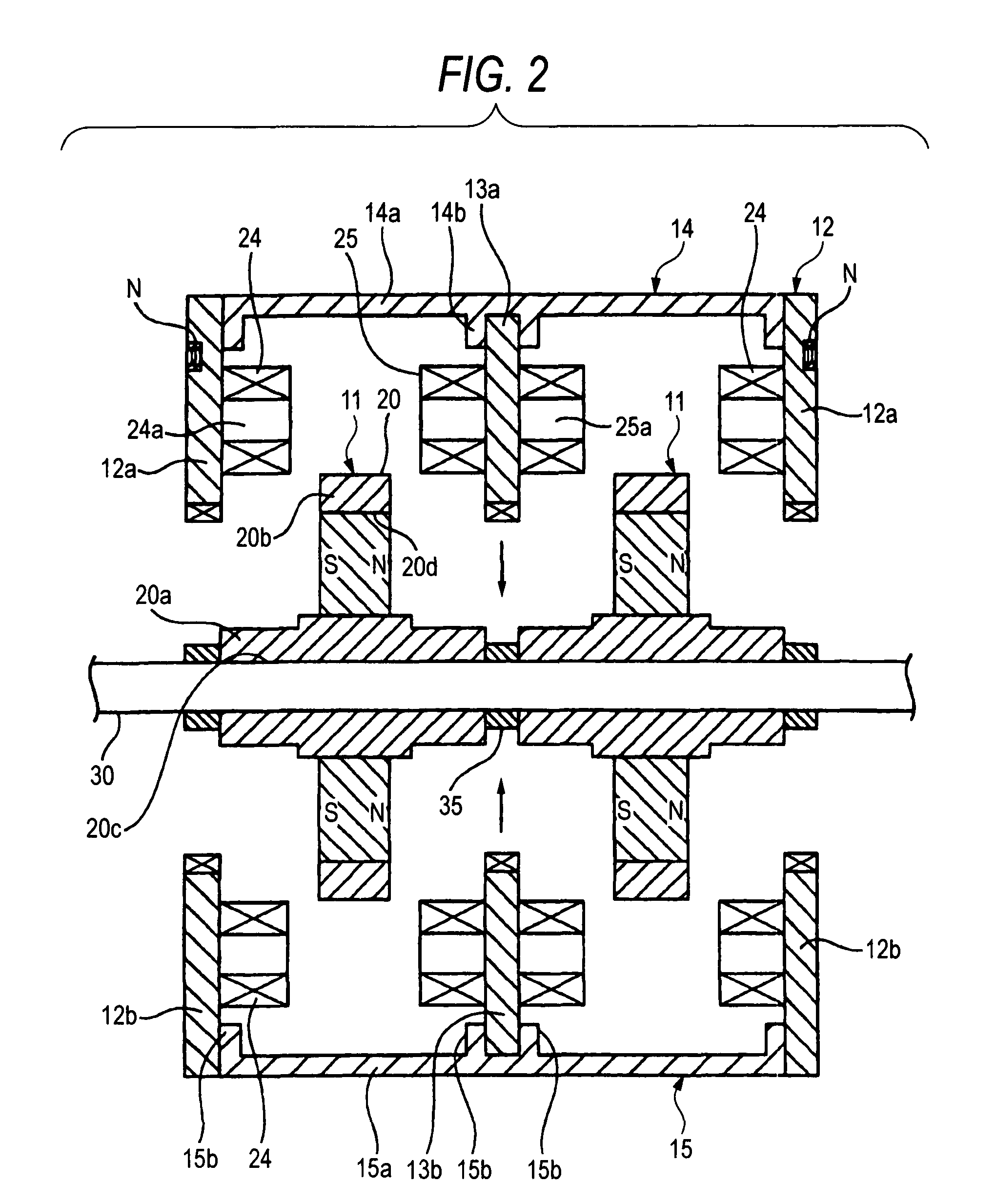Axial gap type motor
a gap type, axial gap technology, applied in the direction of mechanical equipment, superconductor devices, magnetic circuit shape/form/construction, etc., can solve the problems of high precision, bottleneck in manufacture, and difficulty in providing a predetermined air gap, so as to achieve high output and further miniaturization
- Summary
- Abstract
- Description
- Claims
- Application Information
AI Technical Summary
Benefits of technology
Problems solved by technology
Method used
Image
Examples
first embodiment
[0088]FIGS. 1 to 3 show a series coupling synchronous axial gap type motor 10 of the invention. In addition, FIGS. 1 and 2 show a configuration in which two rotors 11, stators 12 at both axial ends, and an intermediate stator 13 are alternately disposed in the axial direction of a rotary shaft 30 in order to simplify illustration. However, as shown in FIG. 3, a number of intermediate stators 13 are provided, and rotors 11 are disposed between adjacent stators 12 and 13 and between adjacent stators 13 and 13, respectively.
[0089]A rotor 11 is fixed to the rotary shaft 30, and stators 13 and 12 are disposed with required air gaps on both sides of the rotor 11 in its axial direction. The stators 12 and 13 are connected to each other by upper and lower connecting spacers 14 and 15, and the stators 12 at both axial ends are fixed to back yokes 16 and 17 with screws 19.
[0090]The rotor 11 has a disk-like rotor part 20b which is made to project in the vertical direction in the drawing from t...
second embodiment
[0116]FIG. 7 shows a
[0117]In the second embodiment, a through-hole 13d is provided in a stator 13 in an intermediate position to which armature coils 25 are attached, the armature coils 25 are fitted into and fixed to the through-hole 13d, and both ends of the armature coils are made to project from both end faces of the stator 13, and are made to face field coils 100 made of a superconductive material with a predetermined air gap therefrom.
[0118]The armature coils 25 and the stators 12 at both ends form empty cores, flux collectors 101 as core members are disposed in hollow parts of the field coils 100, and these flux collectors 101 are in almost the same positions as the tips of the field coils 100. In addition, the flux collectors may be made to project a little.
[0119]Further, back yokes 16′ and 17′ at right and left both ends are also split into upper and lower pieces, respectively, so as to provide upper back yokes 16a′ and 17a′ and lower back yokes 16b′ and 17b′. The upper bac...
third embodiment
[0127]In the third embodiment, it is necessary to cool the field coils 100 made of a superconductive material to an ultra-low temperature. Thus, liquid hydrogen stored in a liquid hydrogen tank 60 is introduced into a hollow part 30a of the rotary shaft 30 to cool a bulk magnet 22′.
[0128]Specifically, the hollow part 30a opened towards one end in the axial direction is provided in the rotary shaft 30, and a pipe 63 having a refrigerant passage 62 is inserted into the hollow part 30a via a bearing 64 from the liquid hydrogen tank 60, and is terminated immediately before a position where a rotor is disposed. The pipe 63 is made into a double-tube structure, the refrigerant passage 62 which allows liquid hydrogen pass therethrough is provided in a central space, and liquid hydrogen is filled into the hollow part 30a in the position where a rotor is disposed, thereby cooling the magnetic coils 100. Meanwhile, the outer peripheral space of the pipe 62 is made into a vacuum insulation spa...
PUM
 Login to View More
Login to View More Abstract
Description
Claims
Application Information
 Login to View More
Login to View More - R&D
- Intellectual Property
- Life Sciences
- Materials
- Tech Scout
- Unparalleled Data Quality
- Higher Quality Content
- 60% Fewer Hallucinations
Browse by: Latest US Patents, China's latest patents, Technical Efficacy Thesaurus, Application Domain, Technology Topic, Popular Technical Reports.
© 2025 PatSnap. All rights reserved.Legal|Privacy policy|Modern Slavery Act Transparency Statement|Sitemap|About US| Contact US: help@patsnap.com



